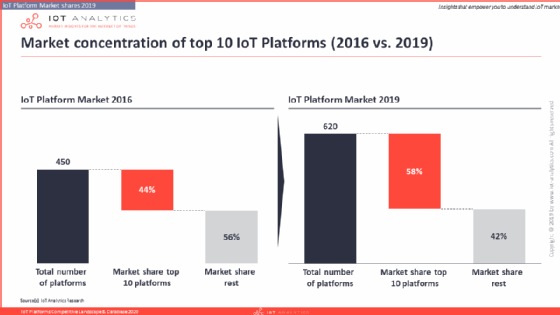
Getty Images/iStockphoto
Achieve IoT interoperability with market knowledge, strategy
Organizations embarking on IoT projects will find it easier to say 'IoT interoperability' than to ensure it; they must consider tools and partners to overcome compatibility issues.
IoT has an interoperability problem that means organizations may not be able to just plug in any devices and expect they will work.
Without IoT's ability to connect disparate technologies, organizations would not derive the value that has increased IoT adoption to achieve business goals. However, in the current IoT market, architects and developers must put in the work to make IoT devices, applications and platforms compatible.
Although many standards and industry agencies work toward better IoT interoperability, organizations must take their own steps to ensure the integration and communication between devices.
IT administrators can start by understanding what interoperability is and why it is an issue in the first place.
What is interoperability and why is it important?
Interoperability is the ability of technological systems, devices and applications to communicate and exchange data automatically with the intent to combine the data and achieve more accurate insights and efficiency. IT administrators target different types of interoperability. Syntactic interoperability facilitates communication through a common syntax of formats and protocols, semantic through uniform data structure and codification, and cross-domain with standard practices and requirements.

Tech professionals often use the terms interoperability and integration when they discuss IoT systems. IoT integration means the different pieces required for IoT projects to work -- such as devices, data, platforms and applications -- can be joined and function as one system. IoT interoperability takes that meaning a step further and defines the ideal of IoT integration, where all parts of an IoT system function seamlessly together without prompting or effort.
Interoperable systems give organizations better access to information and optimize data processes. IT admins require less time to set up or code IoT devices that already have protocols in place to exchange data. Organizations with interoperable devices can expect lower costs because the components or applications share resources and process data together. When more data sources are brought together, the quality of data can increase because it reveals greater context and data processing time can decrease. Organizations focused on deriving greater insights from IoT data must have interoperable devices at the data level for analytics to be possible.
Why is interoperability such a big issue?
Without interoperability, devices and applications can't communicate or share data, so they quickly grow in cost and complexity. A lack of IoT interoperability can limit the adoption of more complex technologies, including digital twins or machine learning. It can also lead to vendor lock-in, where organizations would find it difficult to adopt additional IoT devices or transfer data across platforms or domains. Organizations that can't integrate new devices and services will be limited in how much they can scale up an IoT project and IoT adoption.
IoT devices and platforms each come with their own architecture, data formats, protocols and APIs. IoT vendors and developers do not have a specific set of standards or building blocks they must use in their devices or services, other than basic security hygiene. For example, a thermostat might use Wi-Fi, but an asset tracking device might use cellular connectivity. The plethora of technology available gives IoT device developers many options and combinations to choose from but creates a fragmented market. Even though it makes sense for developers to pick the architecture and protocols that fit their needs best, organizations that adopt multiple IoT devices must consider that the devices might not automatically work together.
IoT is new, relative to many other technologies, such as enterprise desktops, data center infrastructure or even the cloud, which means many startups and major vendor developments still compete for their piece in the industry market. Some vendors develop proprietary IoT products that don't work with devices or applications developers haven't predefined. The contributions of many competing standards bodies, governmental organizations and industry coalitions add another layer for organizations to sort through.
How will IoT interoperability get sorted out?
Despite the multitude of vendors, IoT Analytics researchers have reported that the market shows signs of centralizing on certain providers, but device fragmentation will persist. Customers' demand for ease of use and integration will shape the IoT market and push standardization. For example, manufacturers have implemented IP in more smart devices over the years because it is a more easily integrated communication standard for syntactic interoperability layers.

Organizations can use available integration tools, such as cloud or open source platforms that translate protocols to build their IoT deployments from scratch. They may focus on integration capabilities, device management or build their own applications, supplemented with open source platforms. Devices, such as IoT gateways, can also manage communication between devices and the cloud. In deployments, gateways must support a variety of protocols -- such as Zigbee or Bluetooth -- because IoT devices often don't use the same protocols.
Strategies to address IoT interoperability
Organizations must create a strategy to integrate diverse IoT devices with each other, applications, platforms and the wider business infrastructure. The integration plan must include answers to what IoT OSes and data are used, how IoT data will affect network traffic and who has access to that data. If IT admins don't have the background to address compatibility issues, they can partner with external experts. Organizations can take these steps to ease integration:
- Select a vendor IoT platform that offers integration support. If the platform has many APIs already built in, that will reduce the work an IT administrator must do. Organizations should consider cloud-based platforms that offer analytics, ease of scalability, and management of devices and security. Compare the support services each platform includes, such as vendor testing of product integration, as part of the installation or partnerships with other IoT vendors.
- Design IoT deployments with interoperability in mind. Whenever possible, organizations should use industry standards and software-driven technologies. Consistent use of standards will push the end of IoT market fragmentation and toward more plug-and-play devices.
- Test device interoperability. Interoperability is not limited to the device itself, but also includes devices updates. Before putting IoT systems to use, organizations that piece together their IoT deployment must ensure data can flow throughout the entire IoT system and identify any failure points. Testing, whether automated of manual, should include performance and compatibility.
- Work with systems integrators. Organizations can work with system integrators who have the expertise and experience working with vendors to accelerate IoT projects. Some third-party integrators offer starter kits or work more closely with organizations for greater customization. System integrators tackle the complexity that comes with scaling IoT deployments and often target specific vertical markets within IoT.








